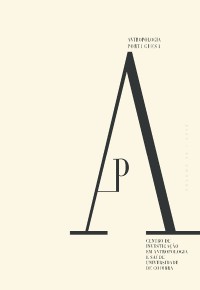Please use this identifier to cite or link to this item:
https://hdl.handle.net/10316.2/44793| Title: | Cribra orbitalia en restos óseos de una cripta religiosa en el sur de la Península Ibérica: la Ermita de San Telmo de Jerez de la Frontera: (España) | Other Titles: | Cribra orbitalia in skeletal remains of a religious crypt in the south of the Iberian Peninsula: la Ermita de San Telmo in Jerez de la Frontera: (Spain) | Authors: | Castro Moreno, Gonzalo Jorge Racero, Rafael |
Keywords: | Paleopatología;Edad Moderna;cofradías;cripta;Paleopathology;Modern Age;guilds;rypt. | Issue Date: | 2018 | Publisher: | Imprensa da Universidade de Coimbra | Abstract: | The Ermita de San Telmo, in Jerez
de la Frontera (Spain), was built between the
16th and 17th centuries by a religious brotherhood
of Trade Union character, particularly
fishermen and boatmen of the environment
of the Guadalete River and the Bay of Cadiz.
After the archaeological intervention carried
out in 2015 for the restoration and rehabilitation
of the hermitage, access to a crypt was
located. There were 21 niches containing a
series of skeleton remains, mostly subadults.
The crypt was opened in the mid-20th century
and most of the niches were altered, so they
were in a moderate conservation status. The
study of the skeleton remains was carried out,
including anatomical identification, paying
special attention to the basic demographic
profile and the paleopathological conditions
of the remains. Cribra orbitalia was observed
in skull fragments. Present findings were
crossed with existing files and data which allowed us, to some extent, to characterize the
child population of Jerez de la Frontera, in the
16th and 17th centuries. La Ermita de San Telmo, en Jerez de la Frontera (España), fue construida entre los siglos XVI y XVII por una cofradía religiosa de carácter gremial, concretamente, de los pescadores y barqueros del entorno del río Guadalete y la Bahía de Cádiz. Tras la intervención arqueológica realizada en el año 2015 durante las labores de restauración y rehabilitación de la Ermita, se pudo localizar el acceso a una cripta con un total de 21 nichos que contenían toda una serie de reducciones esqueléticas, en su mayor parte de individuos subadultos. La cripta fue abierta a mediados del siglo XX y los nichos alterados en su mayoría, por lo que nos encontramos con los mismos en un estado de conservación moderado. Concluida la excavación arqueológica de la misma, se ha realizado el estudio de los restos óseos, incluyendo la identificación anatómica, poniendo especial atención en el estudio del perfil demográfico básico y estudio paleopatológico de los restos, habiéndose observado en fragmentos de cráneo cribra orbitalia, datos que serán cruzados con los archivos existentes y que nos permitirán conocer con mayor exactitud la población infantil de los siglos XVI y XVII en la ciudad de Jerez de la Frontera. |
URI: | https://hdl.handle.net/10316.2/44793 | ISSN: | 0870-0990 2182-7982 (PDF) |
DOI: | 10.14195/2182-7982_35_7 | Rights: | open access |
| Appears in Collections: | Antropologia Portuguesa |
Files in This Item:
| File | Description | Size | Format | |
|---|---|---|---|---|
| cribra_orbitalia_en_restos_oseos.pdf | 782.95 kB | Adobe PDF |  |
Items in DSpace are protected by copyright, with all rights reserved, unless otherwise indicated.
